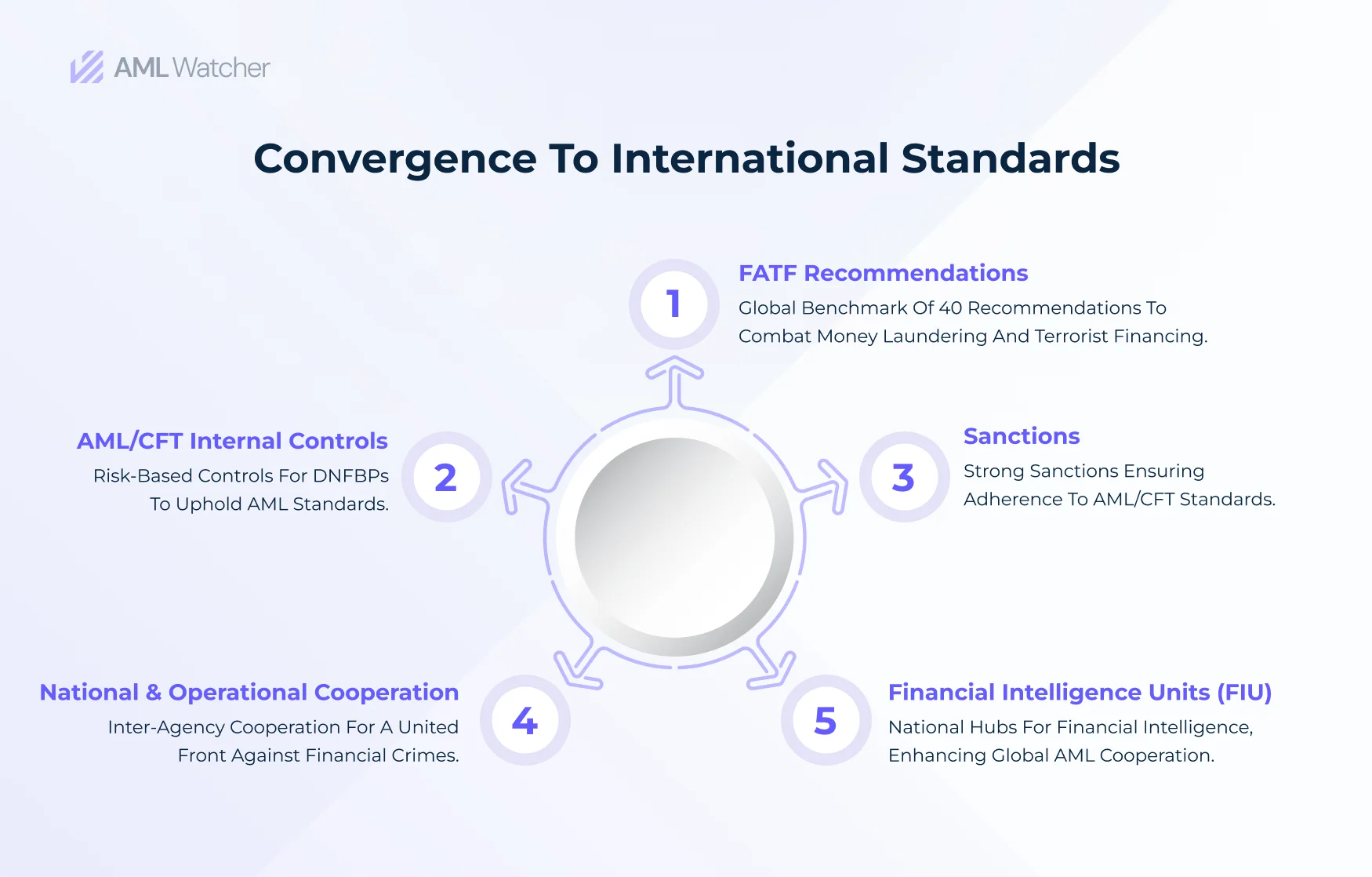
Enforcing Anti-Money Laundering Regulations: Mechanisms
The financial world is badly exposed to money laundering. This is depicted by the United Nations Office on Drugs and Crime (UNODC) that money laundering accounts for 2 to 5% of the world’s GDP. If translated into monetary amounts, it translated into EUR 715 billion to 1.87 trillion necessitating strong demand for Anti-Money Laundering (AML) protocols.
This blog will explore how financial policies have changed over time, highlighting the pros and cons of AML regulations as a significant need to control crime or enhance security of the financial system.
What role do Financial Intermediaries play?
Financial Intermediaries act as the primary defense against illicit financial activities including terrorism financing, money laundering, and corruption. A crucial aspect stages for this institution is the KYC process which is linked to understanding financial behaviors.
Compliance with International Standards
Regulatory bodies such as FATF (Financial Action Task Force) is enabled to promote effective compliance, regulatory, and operational measures for combating money laundering and other related threats to the integrity of the international financial system. Here’s a detailed view of it:
Mandated Recommendations
FATF has laid out 40 recommendations which are recognized as global standards for AML/CFT (Anti-Money Laundering/Combating the Financing of Terrorism) providing a comprehensive framework for countries to reduce money laundering. The coverage of areas by these recommendations include; criminalization of money laundering, terrorist financing, and confiscating assets related to these crimes.
Sanctions Implementation:
Sanctions, which can be criminal, civil, or administrative are necessary to impose on individuals, entities, and countries when needed. The implementation should be effective, proportionate, and dissuasive, targeting not only financial institutions but directors and senior management. The overarching goal of sanctions, on the whole, is to ensure entities are aware of their AML/CFT obligations and the consequences if they fail to comply with them.
Understand the Role of Financial Intelligence Units (FIU):
These units are the foundation for the enforcement of AML regulations. As a central element, these units are not only responsible for collecting and processing intelligence but also play a critical role in combating illicit financial activities. The operational independence of these units ensures regulatory compliance without being biased in their reasoning.
By aligning with the Egmont Group’s guidelines, a global network of FIUs, they further strengthen international cooperation and information exchange, enhancing the global fight against money laundering.
AML/CFT internal controls
The FATF Recommendations underscore the pivotal role of AML/CFT internal controls in enforcing AML regulations for Designated Non-Financial Businesses and Professions (DNFBPs). By adopting a risk-based approach, Supervisors or Self-Regulatory Bodies (SRBs) ensure that DNFBPs implement robust internal controls tailored to their specific money laundering and terrorist financing risks. These controls, combined with the oversight of supervisors equipped with adequate powers, resources, and professional standards, act as a mechanism to monitor and sanction DNFBPs effectively. Entities like casinos are subject to stringent measures, such as licensing and comprehensive regulatory regimes, reinforcing AML regulations. Additionally, measures to prevent criminals from holding significant interests in DNFBPs further bolster the effectiveness of these internal controls in upholding AML standards.
National and Operational Cooperation
Countries should establish inter-agency frameworks for National Cooperation and Coordination to combat money laundering (ML), terrorist financing (TF), and proliferation financing (PF). These frameworks, led by designated authorities, should encompass central government departments, law enforcement, the Financial Intelligence Unit (FIU), security agencies, customs, supervisors, tax authorities, and company registries, among others. Additionally, for Operational Cooperation, mechanisms should be in place to ensure timely information sharing among these authorities, both proactively and upon request, emphasizing the importance of collaboration and clear roles in addressing ML, TF, and PF challenges.
Criminalization and Enforcement
To enforce AML regulations effectively, two primary mechanisms are crucial. Firstly, the criminalization of offenses, especially those feeder activities to money laundering that aren’t recognized as criminal acts in many countries. For example, exchanging large amounts of fiat currency into other currencies or into cryptocurrencies without going through regulated financial institutions can be a tactic to obscure the origin of the money. Through criminalizing these activities, it not only deters individuals but also strengthens the enforcement of AML regulations and aids the judicial process.
Understanding the Impact of Implementing AML Regulations
The integrity of the Financial System
The integrity and stability of the financial system are enhanced when appropriate regulations are implemented. The insane leak of 11.5 million documents in 2016, in the Panama Papers scandal serves as a gentle reminder of the gaps in the financial system and the need for AML regulation.
EDD and Customer Verification:
To understand these terminologies, notice the case of BNP Paribas. In 2014, BNP Paribas was fined $8.9 billion for sanctions violations by U.S. authorities due to inadequate EDD and verification processes. The bank was forced to improve the AML controls, after the fine.
Risk for Unintended Drawbacks:
“De-risking” – a phenomenon by which banks avoid doing business with certain sectors or regions perceived as high risk, may also exclude legitimate businesses from the financial system.
For Instance: AML regulations led many Western banks to close accounts of money transfer operators (MTOs) due to concerns about money laundering and extremist financing.
Higher Operational Cost of Financial Institutions:
Better compliance demands financial institutions to invest in advanced monitoring systems, enabling compliance officers to reduce manual workload and training fatigue for staff.
This can lead to increased operational costs. Take as an example the case of HSBC where it was fined $1.9 billion by U.S. authorities for AML lapses, including facilitating money laundering for drug cartels. In response, HSBC undertook a significant overhaul of its compliance systems, investing over $1 billion in advanced monitoring technology, hiring compliance professionals, and training staff. While these measures strengthened HSBC’s AML framework, they also resulted in substantial operational costs.
Wrapping up
The thorough research makes it clear that money laundering, a threat that shakes the stability and credibility of economies throughout the world, continues to threaten the global financial system. There are difficulties involved in enforcing AML legislation, even if measures including the involvement of financial intermediaries, convergence to international norms, criminalization, and enforcement are crucial in addressing this issue. But AML Watcher has taken the lead in this issue by providing specialized services like sanctions screening, PEP screening, adverse media screening, and tracking international leaks to make sure that enforcement of AML regulations is made easier for industries and organizations.
We are here to consult you
Switch to AML Watcher today and reduce your current AML cost by 50% - no questions asked.
- Find right product and pricing for your business
- Get your current solution provider audit & minimise your changeover risk
- Gain expert insights with quick response time to your queries




